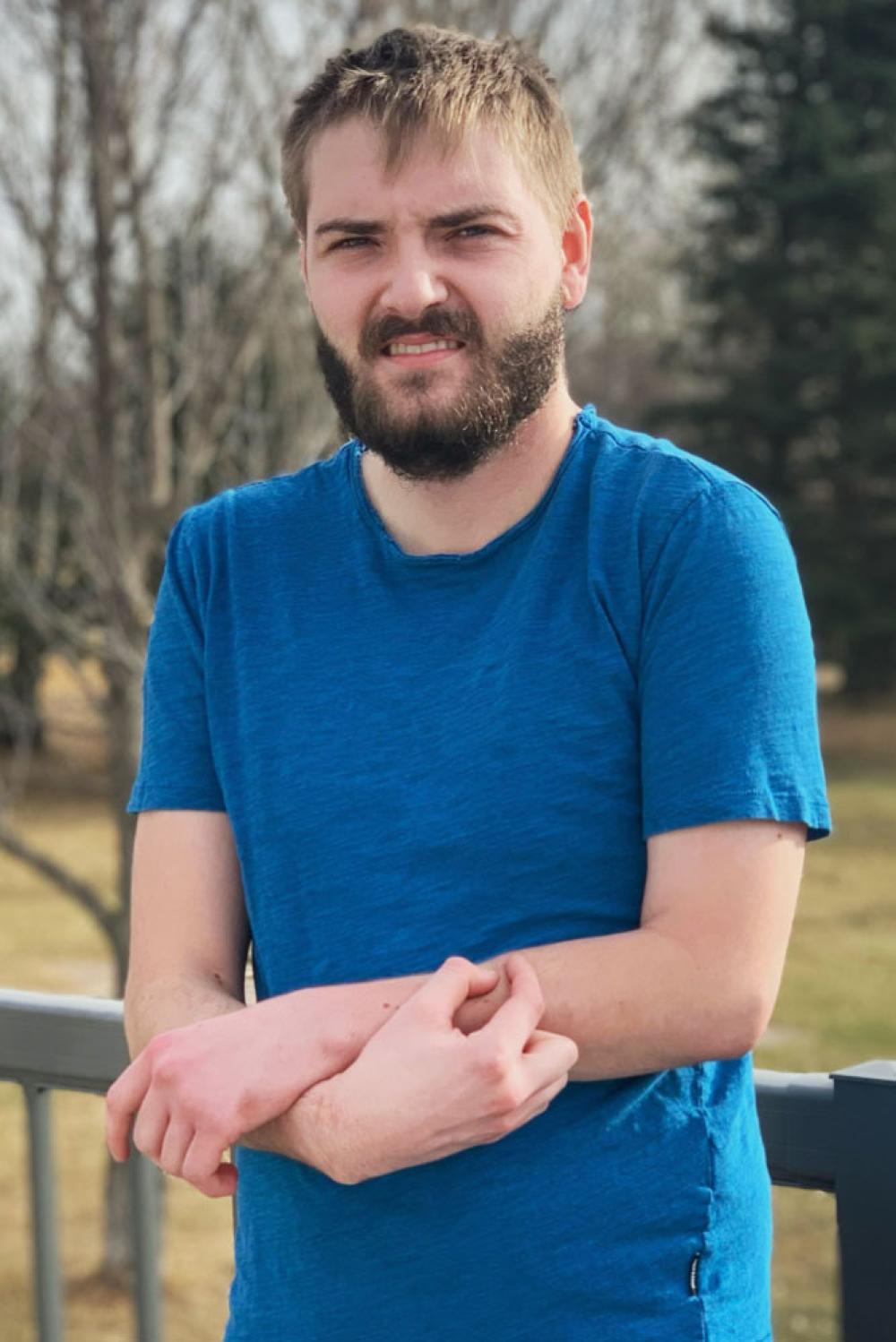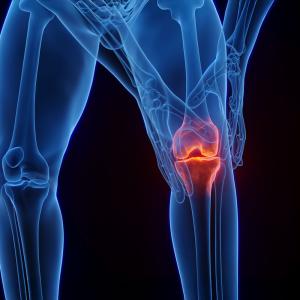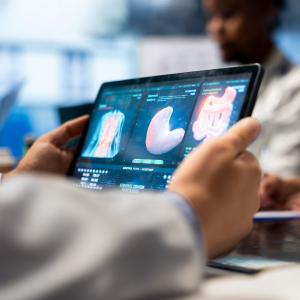
After two surgeries, performed by Dr. Jacques H. Hacquebord (pictured) and Dr. Andrew Price, Tyler Theroux has been able to play sports, including ball hockey and basketball. He’s intends to go back to school to become a recreational therapist.
CREDIT: Haley Ricciardi
Tyler Theroux had been born with a brachial plexus injury, which can cause severe nerve damage, leaving his left arm dysfunctional and contorted, and causing debilitating pain. Numerous procedures and lifelong therapy did little to nothing to help his arm function properly or relieve the pain. As a teen, he had to be homeschooled for several years.
Tyler went on to college after high school, but after a couple of falls, his arm was injured even further, largely because his arm’s dysfunction prevented him from catching himself to avoid damaging it. In excruciating pain almost constantly, Tyler had to drop out of his college studies, was severely depressed, and had become bedridden. His diligent parents, meanwhile, had reached a dead end in their search for a local expert who could help with his complex case.
“It was a long journey to figure out what we could do, and we had received all different kinds of opinions and referrals to different surgeons,” said Tyler’s mother, Michelle Theroux. “Tyler reached the point where he couldn’t exist any longer like this.”
His family decided he could not wait any longer, and searched for experts all over the world who could help, willing to sell their house in Canada if they had to. Through a recommendation, they found Jacques H. Hacquebord, MD, and Andrew E. Price, MD, at NYU Langone Orthopedics.
“The doctors were very humble and caring,” said Ken Theroux, Tyler’s father. “They said, ‘We’re going to change your life.’ It was emotional for Tyler to hear that he might not be confined to this prison any longer.”
Dr. Hacquebord and Dr. Price decided to perform two surgeries, which took about four hours. The first, a supraclavicular neurolysis, would remove scar tissue from the injured nerves. The second procedure was a rotational humeral osteotomy, which rotated the bone outward, allowing Tyler’s arm to fall in a more natural position, to further reduce the intense pain he suffered.
“Through working collaboratively with colleagues, we’re able to meet the unique needs of patients like Tyler,” said Dr. Hacquebord. “For complex problems, it is necessary to draw from the strengths and knowledge of all fields. Only through this team approach can we best evaluate patients’ needs and provide the treatments that are ideal for them.”
NYU Langone has one of the oldest and largest programs on the Eastern Seaboard that treat injuries like Tyler’s: the Center for Brachial Plexus Injuries. In 1 or 2 births for every 1,000, a baby’s shoulder will become stuck in the birth canal, and lifesaving efforts will pull the baby out, stretching the nerves in the neck. Many times, they heal spontaneously, but some children have nerve deficits and joint problems, needing an expert team of specialists.
“It oftentimes takes myself and a team of colleagues together in surgery, reconstructing the nerves under a microscope,” said Dr. Price. “Each patient is different. You don’t take a cookie-cutter approach.”
Tyler said that after his surgeries, his level of pain went from a 9 out of 10 to a 2, and he has more mobility in his arm.
“The effect on my concentration has been amazing. It’s a miracle. I am able to use my arm for everyday tasks, like doing the dishes, doing things around the house, and playing sports,” he said. “Before, if I had to go get groceries or go shopping at the mall, I could only last 45 minutes. Then I’d have to go home, and it would take one or two days to recover.”
He’s now fully recovered from surgery and is no longer in severe pain and confined to his bed. He’s out playing the sports he loves, including ball hockey and basketball. He’s planning on going back to university to become a recreational therapist, giving back after so much pain and heartache.
This past summer, he attended the 2024 United Brachial Plexus Network (UBPN) Camp, along with other children and adults who have brachial plexus injuries, and their family members.
“Until attending the UBPN camp, I saw myself as a disfigured and kind of unlikable person who is burdened with pain and without hope for a productive and fulfilling life,” he said of life before the surgeries that allowed him to continue on and attend the life-changing camp. “Meeting so many people from all ages and backgrounds, who live with the same challenges and barriers as I do, find ways to engage in fulfilling, productive lives, has given me so much hope.”
Media Inquiries
Marlene Naanes
Phone: 212-404-5016
Marlene.Naanes@NYULangone.org


